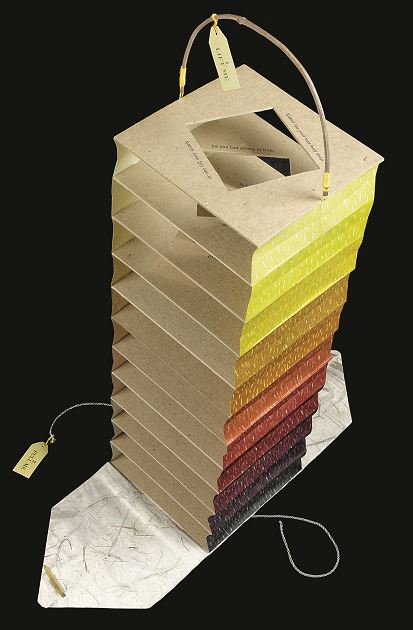
Slip off the cover, draw apart the bellows and peep through the hole to discover the multi-layered, multi-coloured, miniature world of the paper peepshow. In appearance the peepshow resembles a pocket-sized theatre. Held within its expanding walls are glimpses into stunning vistas, celebrated historical events and striking engineering feats.
Thanks to the Government’s Cultural Gifts Scheme, the world’s largest and most comprehensive collection of paper peepshows has been allocated to the V&A Museum. The gift of over 360 paper peepshows, along with other optical pastimes, spans nearly 300 years and 12 different countries from Canada to China.
The collection’s subject matters run from the surreal to the sensational and the everyday to the heroic. Visitors can explore 19th-century representations of Queen Victoria’s coronation or Napoleon’s exile, as well as grittier depictions of wars or a women’s workhouse. Whoever wishes to suspend their disbelief can unfurl poetry and prose between the expanding bellows of 20th-century peepshows or seek escapism in the fantasy worlds of 21st-century visions of an enchanted forest or fairyland. For the last three centuries, these imaginative keepsakes have provided adults and children alike with a source of inexpensive, immersive entertainment.
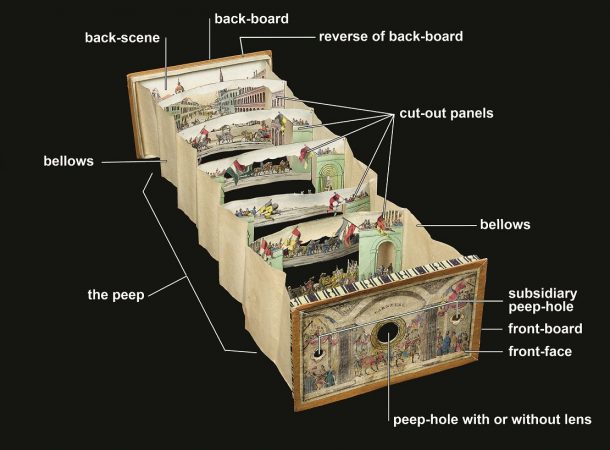
Paper peepshows or teleoramas were first published in the 1820s by a German book and art seller called Heinrich Friedrich Műller. His concept owes much to 18th– century optical curios, such as the cosmoramas which were built into gallery walls or the cumbersome boîtes d’optique, which were large, wooden boxes with multiple scenes. In contrast to their predecessors, Műller’s teleoramas were small and primarily constructed from paper and cloth (see fig. 3). They consisted of staggered paper panels which were connected at the sides by flexible material bellows. The front and back boards of the peepshow pulled apart, to reveal a concertina structure and the diminishing paper panels created an effect of receding perspective, which lead the viewer’s gaze towards the back scene (see fig.2). The teleoramas’ innovative concept, combined with its cheap and simple construction, meant that the design was quickly copied and soon peepshows were being mass-produced across the world under a range of different terms including: faltperspektive, perspektivische ansicht, areaoramas, polyoramas, perspective and telescopic views.
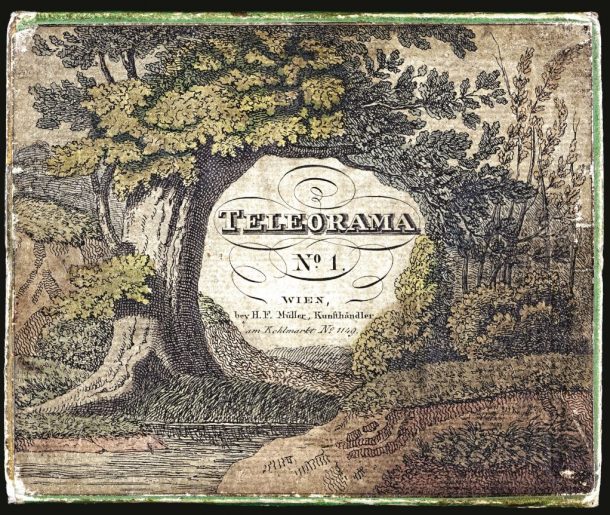
Since the 1820s paper peepshows have been developed in a wide assortment of formats, including square, rectangular, circular and oval, with some comprising up to 11 different cut-out panels and multiple peepholes. The quality of the peepshows differs enormously. At the high-end are exquisite hand-made works, such as View from L’Angostura de Paine in Chile, British, c.1835 (fig. 4). This unique watercolour peepshow depicts a mountainous landscape with two figures dressed in corresponding contemporary European and South American apparel. The work is attributed to Maria Graham, later Lady Callcott, who documented her travels across India and South America during the 1820s in several published journals. Maria’s adventures and artwork will be explored in further detail in a future blog.
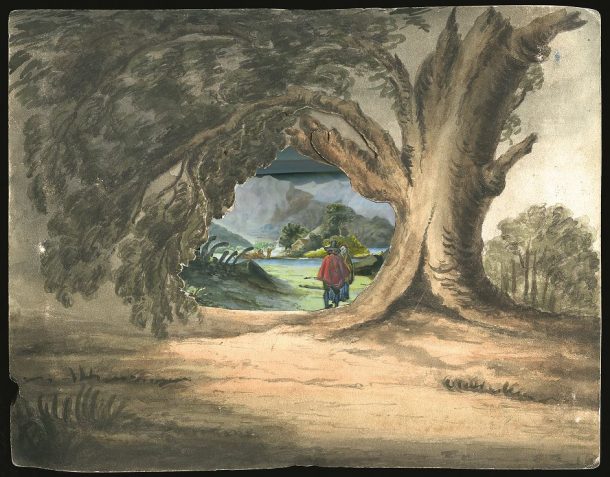
At the lower end of the spectrum were mass-produced, printed peepshows such as Interior of the Magnificent New Crystallpalace [sic] at Sydenham, 1856 (fig. 5). The artwork for this peepshow resembles other earlier peepshows of the Crystal Palace and could not have been sketched from real life as it contains several factual inaccuracies, such as fictitious landscaping, hanging foliage and fountains plus a train almost issuing from the building.
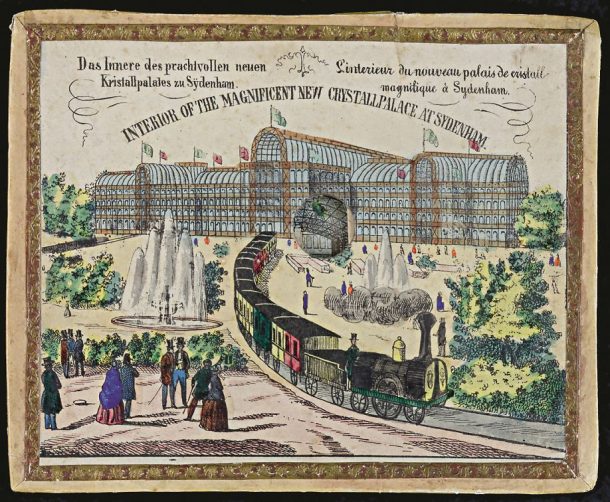
Both the individually and mass-produced peepshows were enlivened with jewel-like emerald greens, vermillions and deep black inks and paints (fig. 6). These colours often owed their vividness to a deadly range of pigments including lead, mercury and arsenic compounds.
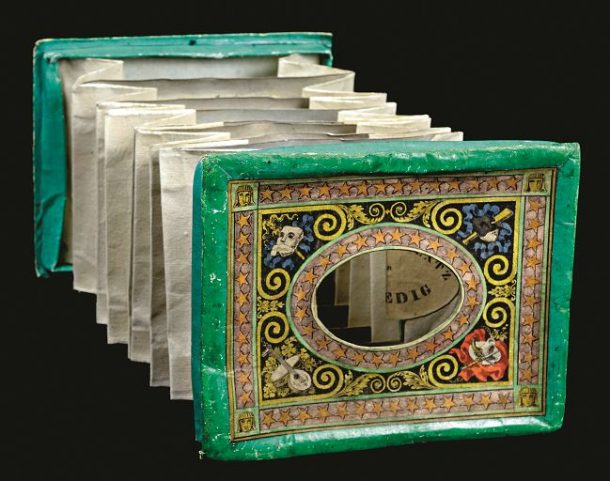
Despite their age and fragility, these peepshows have lost none of their visual impact and are packed with fascinating characters, famous sites, humorous interactions and minute details. This collection offers a wealth of opportunities for research into their artistic, cultural and historical backgrounds. In the coming months, we will be sharing stories and new discoveries on these beautiful and intriguing objects.
This collection of peepshows was accepted under the Cultural Gifts Scheme by HM Government from the collections of Jacqueline Gestetner and Jonathan Gestetner and allocated to the Victoria and Albert Museum, 2016.
The collection will soon be available to search online on the National Art Library Catalogue and on ‘V&A Search the Collections’. Anyone wishing to access the peepshows can view them by appointment at the V&A’s National Art Library.
This extensive collection is a well-documented resource, as a full illustrated catalogue was published in 2015 by the late Ralph Hyde (R. Hyde, Paper Peepshows: the Jacqueline & Jonathan Gestetner Collection, Woodbridge: Antique Collectors’ Club, 2015).
This collection of peepshows was accepted under the Cultural Gifts Scheme by HM Government from the collections of Jacqueline Gestetner and Jonathan Gestetner and allocated to the Victoria and Albert Museum, 2016.
More information about the peepshows can be found here or discover more about Tara Bryan’s work here

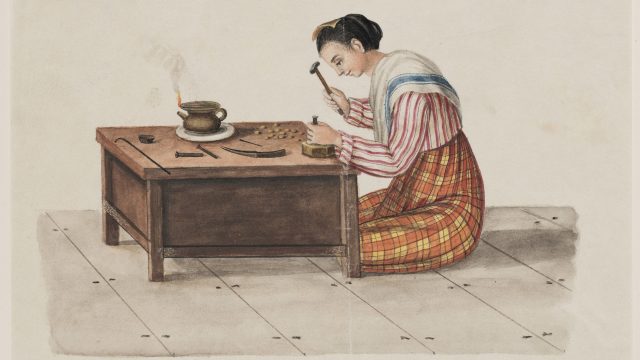
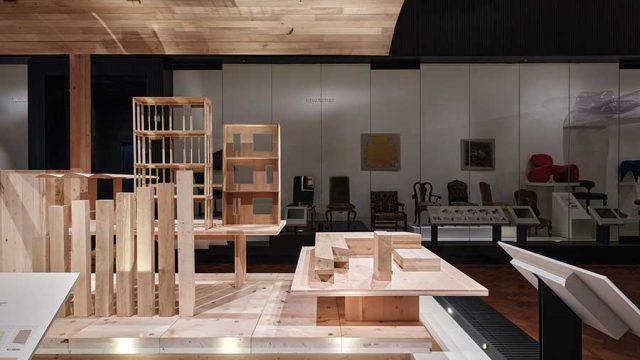
I enjoyed reading the blog, Katy, and although I had seen some of the Gestetner peepshows over the years at antiquarian bookfairs, I learned new things from your piece. Thank you. Wonderful that the collection will be online!
Es precioso! Podria ver alguno más??